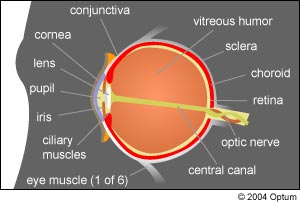Altitude changes and the ear
Altitude changes can result in pressure changes within the air-filled cavity of the middle ear. Normally, the air pressure inside your middle ear equals the surrounding air pressure on the outside of the ear. When you change altitude (through airplane travel or mountain climbing, for example), the air pressure outside of the ear also changes. The eustachian tube needs to function properly to maintain the balance of air pressure between the middle and outer ear.
Anatomy
The middle ear is a small air-filled cavity just behind the eardrum. This cavity contains the middle ear bones that transmit sounds from the eardrum to the inner ear. The eustachian tube connects the middle ear cavity to the back of the throat/nose area and allows air pressure changes within the middle ear. The air pressure on both sides of your eardrum is typically equal because of the eustachian tube's ability to communicate air. The eustachian tube can become congested, similar to the membranes within the nose. When congestion occurs, the eustachian tubes may not function properly. This condition may be referred to as eustachian tube dysfunction.

Causes/associated factors
At higher altitudes, air density and air pressure fall. Because air is a gas, it expands when air pressure falls. When the air in your middle ear expands, it typically escapes to your throat through the eustachian tube. You may also feel pressure against your eardrum. It may hurt if your eustachian tube is blocked or swollen, usually due to allergies, the common cold or an upper respiratory infection.
Signs/symptoms
When the air in your middle ear equalizes with the air in the outer ear, your eardrum may move. You may notice a popping sensation. In addition:
Your ear may feel blocked or plugged.
You may feel a vacuum or pressure sensation.
You may experience a gradual, temporary decrease in hearing.
You may feel pain if the air in your middle ear isn't allowed to equalize pressure with the outer ear. (This can happen during sudden changes in atmospheric pressure, such as a rapid descent.)
Diagnosis
Symptoms usually occur during a sudden change in altitude. In most cases, you'll be able to determine the likely cause of your ear fullness or pressure sensations by noticing the pattern of symptoms that develop with altitude or environmental pressure changes. Your doctor can do simple tests to determine how well the eardrums and eustachian tubes are able to respond to pressure changes.
Treatment/prevention
To help you manage the ear discomfort associated with altitude changes on an airplane, consider the following suggestions.
During takeoff and landing, concentrate on activities that open your eustachian tubes. For some people, it can be as easy as yawning a few times. Swallowing can also be effective. To help you swallow more often, you may want to chew gum or suck on hard candy. (Remember, don't give hard candy to children age 4 and under.) Or, try swallowing with a closed mouth and pinched nostrils to create a vacuum that draws pressure away from the expanding air in your middle ear. Finally, don't sleep during takeoff or landing. You may not swallow enough to keep up with the pressure changes.
To help your ear pop more easily, you may want to take an over-the-counter antihistamine, decongestant or combination product. For maximum effect during descent, oral decongestants should be taken several hours before your arrival time. Nasal decongestant sprays should be taken one hour ahead of time. Consult your doctor before using decongestants, however, especially if you take prescription medications or have medical conditions.
If you have allergies, take your medication at the beginning of the flight. It may be helpful to use them for a number of days before your flight as well.
If you have a severe cold, sinus infection or allergy attack, you may want to reschedule your flight or consult your doctor for advice. If you've recently had ear surgery, consult your doctor before the flight.
If you're traveling with a baby, encourage him or her to nurse or suck on a bottle or pacifier during takeoff and landing. Make sure the baby stays awake during takeoff and landing as well.
If your ear is feeling blocked and is otherwise not painful during or after the flight, you may be able to pop it by gently blowing air into the back of your nose. Simply pinch your nostrils shut and take a mouthful of air. Using your cheek and throat muscles, force the air into the back of your nose. You may have to gently repeat several times.
Complications
Unrelieved pressure in the middle ear may cause physical injury or damage to your ear, known as barotrauma. This may result in ear pain and bleeding within the middle ear. Rapid pressure changes within the middle ear may cause your eardrum to rupture. Drainage from the middle ear, usually bloody, may also occur through the ruptured part of the eardrum. Hearing loss is also a possibility. Changes in hearing are usually temporary, however, and simply related to the accumulation of fluid in the middle ear. The degree of hearing loss can vary, as can the length of time it takes for middle ear fluid to completely resolve.
Pregnancy-specific information
Pregnancy isn't a risk factor for middle ear conditions.
Senior-specific information
Growing older isn't a risk factor for middle ear conditions.

<< Home